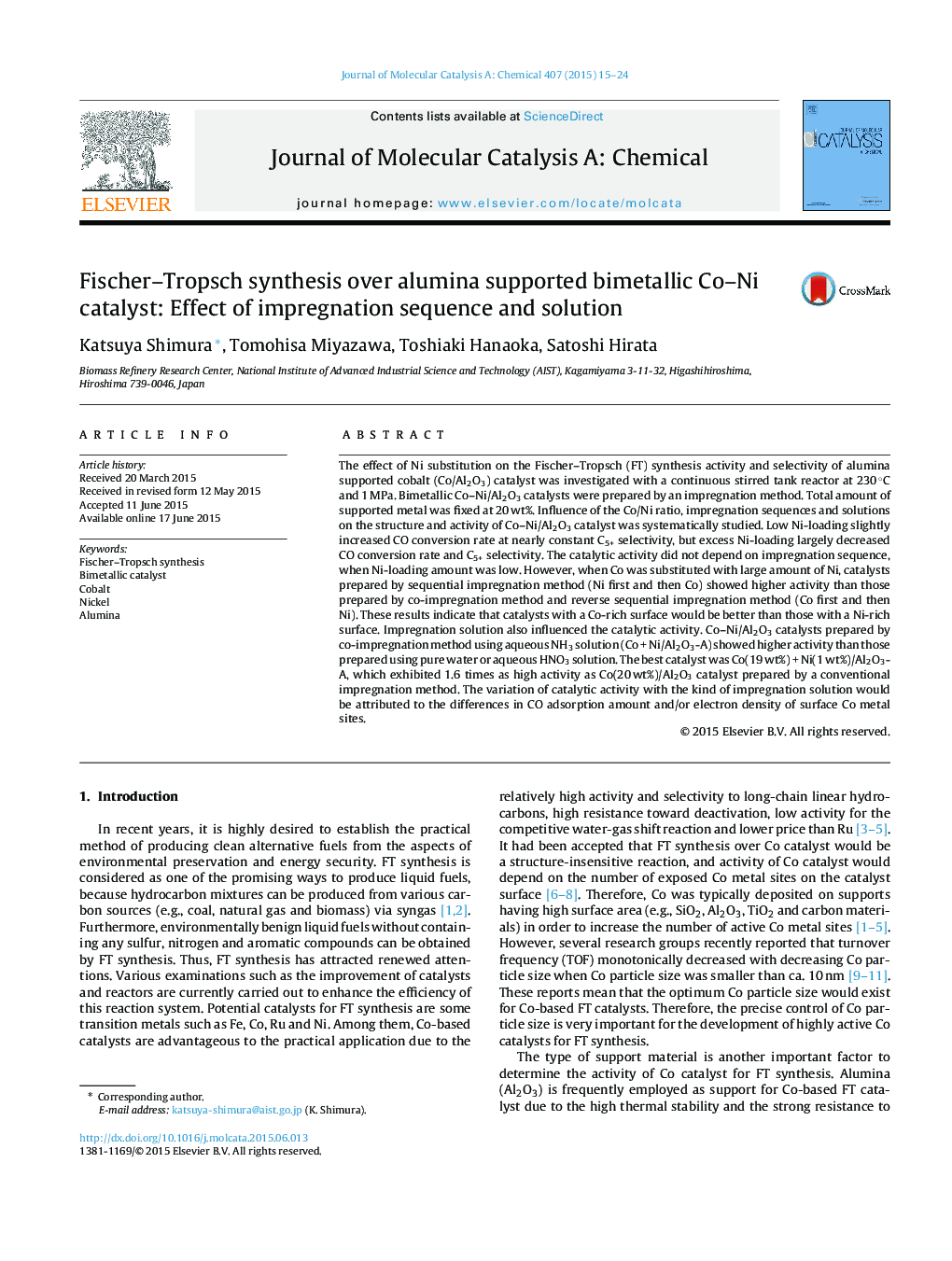| Article ID | Journal | Published Year | Pages | File Type |
|---|---|---|---|---|
| 64980 | Journal of Molecular Catalysis A: Chemical | 2015 | 10 Pages |
•Al2O3 supported bimetallic Co–Ni catalyst was employed for FT synthesis.•Low Ni-loading slightly increased CO conversion rate.•Use of aqueous NH3 as impregnation solution largely increased catalytic activity.•Catalytic activity correlated with CO adsorption property of surface Co metal sites.
The effect of Ni substitution on the Fischer–Tropsch (FT) synthesis activity and selectivity of alumina supported cobalt (Co/Al2O3) catalyst was investigated with a continuous stirred tank reactor at 230 °C and 1 MPa. Bimetallic Co–Ni/Al2O3 catalysts were prepared by an impregnation method. Total amount of supported metal was fixed at 20 wt%. Influence of the Co/Ni ratio, impregnation sequences and solutions on the structure and activity of Co–Ni/Al2O3 catalyst was systematically studied. Low Ni-loading slightly increased CO conversion rate at nearly constant C5+ selectivity, but excess Ni-loading largely decreased CO conversion rate and C5+ selectivity. The catalytic activity did not depend on impregnation sequence, when Ni-loading amount was low. However, when Co was substituted with large amount of Ni, catalysts prepared by sequential impregnation method (Ni first and then Co) showed higher activity than those prepared by co-impregnation method and reverse sequential impregnation method (Co first and then Ni). These results indicate that catalysts with a Co-rich surface would be better than those with a Ni-rich surface. Impregnation solution also influenced the catalytic activity. Co–Ni/Al2O3 catalysts prepared by co-impregnation method using aqueous NH3 solution (Co + Ni/Al2O3-A) showed higher activity than those prepared using pure water or aqueous HNO3 solution. The best catalyst was Co(19 wt%) + Ni(1 wt%)/Al2O3-A, which exhibited 1.6 times as high activity as Co(20 wt%)/Al2O3 catalyst prepared by a conventional impregnation method. The variation of catalytic activity with the kind of impregnation solution would be attributed to the differences in CO adsorption amount and/or electron density of surface Co metal sites.
Graphical abstractFigure optionsDownload full-size imageDownload high-quality image (132 K)Download as PowerPoint slide
